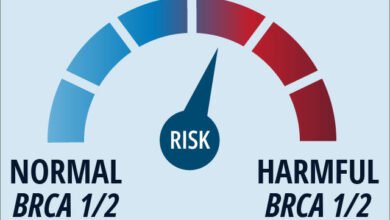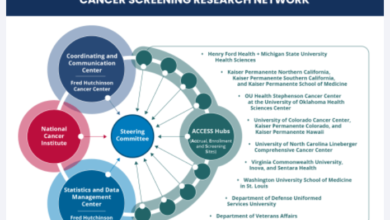Immunotherapy Is Buying More Time for Patients With Cholangiocarcinoma

Tina House should have been relieved when she went to her doctor to discuss a lump she found on her skin. At first, the news seemed good: The lump was only an ingrown hair.
During her appointment, she and her physician agreed to have some routine bloodwork done. House soon got a phone call asking her to return to the doctor. The testing indicated that there was something wrong with her liver enzymes. House’s doctor referred her for a sonogram. Shortly after, House learned that she was about to begin fighting for her life.
“I was blissfully enjoying my retirement,” House recalls. She and her husband, formerly of Texas, had retired to Spruce Pine, a small town near Asheville, North Carolina. They hiked regularly in the mountains around their town and bowled together in two leagues.
“I really didn’t have any symptoms,” says House. “I’ve always been a very healthy person. I had in mind from my adulthood that I was going to live to be in my mid-90s.”
Besides bowling and hiking, House liked to take her dog on long walks. She’d been a member of Weight Watchers for more than 35 years. But not long after her sonogram in April 2022, when House was 65, her doctor took time out of a vacation to deliver urgent news: House had advanced biliary tract cancer, a rare and deadly disease.
She walked over to her husband, who was on the phone, and wrote “cancer” on a Post-it note.
“I felt like the whole floor had just been pulled out from under me,” House remembers. “We hung up the phone, stared at each other and both started bawling.”
House, like most people with biliary tract cancer, had no symptoms beyond some minor fatigue and a little weight loss. The National Cancer Institute says the majority of patients with the disease don’t experience symptoms until the tumor grows large enough to cause jaundice and itching in addition to less specific symptoms like weight loss due to abnormal function that drains the bile it produces through the biliary tract into the intestines.
Despite the minimal symptoms, House was in grave danger. Without treatment, she learned, she would live only six months. And although one surgeon initially thought she could remove House’s tumor, her care team soon determined that the cancer had metastasized to nearby lymph nodes, rendering the disease inoperable.
Months earlier, a 53-year-old Indiana entrepreneur Marshall Morris had received a similar diagnosis. In the summer of 2021, Morris was doing yardwork at home in Indiana when he began to feel itchy. He initially thought it was poison ivy.
“The itching just continued to get worse for the whole month of June to the point where I couldn’t sleep,” Morris says. “Imagine the worst kind of itching you get from poison ivy, but underneath the skin.”
He visited his doctor for some tests, at which point he found out that the “numbers” for his liver function were unusual.
“I’m not all rainbows and unicorns. ‘Just tell it to me like it is, Doc,’” Morris remembers saying. “The doctor was this older guy. I don’t think he looked more than a minute and then he goes, ‘There’s a 75% chance this is cancer.’”
Like House, Morris soon learned that his cancer was unresectable because of the tumor’s location surrounding the portal vein, which drains blood from the digestive tract. And just as in House’s case, Morris’s disease was incurable.
Cholangiocarcinoma is famously difficult to treat, as it usually presents at advanced or inoperable stages and does not respond very well to most cancer drugs.
“One of the struggles we’ve had in managing biliary tract cancer is that it really is three separate diseases,” says Dr. Flavio G. Rocha, professor of surgery in the division of surgical oncology at Oregon Health & Science University and physician-in-chief of the Knight Cancer Institute.
These three diseases are intrahepatic cholangiocarcinoma, in which the tumor develops in the bile duct inside the liver, and two different kinds of extrahepatic cholangiocarcinoma (hilar and distal), which occur outside the liver. Gallbladder cancer can also fall under the broad category of biliary tract cancer.
Historically, cholangiocarcinoma has been known as an aggressive disease with a poor prognosis, especially in its later stages.
“They tend to be more aggressive malignancies,” Rocha adds. “They tend to metastasize early, which makes (patients) ineligible for surgical resection, which is really to date the only potentially curative treatment.”
Furthermore, Rocha continues, it is very difficult to screen patients for cholangiocarcinoma, meaning that “it may or may not be too late” to offer curative treatment by the time people are diagnosed.
The American Cancer Society estimates that the five-year survival rate for people with intrahepatic biliary tract cancer is just 9% across all disease stages. For extrahepatic disease, the estimated five-year survival rate is 10% across all stages. Survival rates for advanced disease are dismal.
Until recently, treatment options for unresectable cholangiocarcinoma have been limited, relying on a combination of the chemotherapy drugs cisplatin and gemcitabine for what Dr. Aiwu Ruth He calls “palliative systemic therapy.”
“This combination has been the standard of care for the past decade,” explains He, a medical oncologist at Georgetown University Medical Center in Washington, D.C., and a researcher in liver and biliary tract cancer.
More recently, additional treatment options have become available. In September 2022, the Food and Drug Administration (FDA) approved the immunotherapy drug Imfinzi (durvalumab) combined with the chemotherapy drugs cisplatin and gemcitabine, to treat patients with metastatic or locally advanced biliary tract cancer.
“(Imfinzi) changes the fundamental approach by which we treat anyone with a new diagnosis of biliary tract cancer,” says Dr. Douglas Rubinson, assistant professor of medicine at Harvard Medical School in Boston and a medical oncologist specializing in gastrointestinal cancers.
Rubinson said the past decade’s reliance on gemcitabine and cisplatin came from a 2010 trial that showed the two drugs together improved survival from about 8.4 months to just under a year, a significant improvement over gemcitabine alone. The two drugs had comparatively mild side effects, which also made them an attractive choice.
“It’s a meaningful improvement, but I think it speaks to just how much further we had to go with this disease,” Rubinson says. “Whenever we have encouraging but certainly not phenomenal results, and we have modest toxicity, there’s a constant interest: Is there a way to intensify therapy, to add a third drug to the mix to improve outcomes?”
This is where Imfinzi comes in.
The FDA based its approval upon the phase 3 TOPAZ-1 trial, which was designed to evaluate the efficacy of the drug combination in nearly 700 patients who had either untreated metastatic or inoperable biliary tract cancer, or who had previously treated recurrent disease. Imfinzi had already been approved for use in certain types of lung and bladder cancers.
“Over the last 10 years, many treatments have been tested, but this is the first positive phase 3 trial,” He says.
Dr. He was one of the investigators in TOPAZ-1. She says patients treated with the previous chemotherapy-only approach lived for a median of less than one year.
Researchers working on the trial randomly assigned patients to receive the combination chemotherapy with either Imfinzi or placebo.
Overall, 26.7% of patients assigned to the Imfinzi plus chemotherapy treatment regimen reportedly showed either a partial or complete response to the treatment, while those assigned to the placebo and chemotherapy showed an objective response rate of 18.7%.
At first glance, that may not seem like much of an improvement, but consider the number of patients whose lives were extended by Imfinzi.
The combination of Imfinzi and chemotherapy more than doubled the two-year survival rate, the investigators reported: At 24 months, the overall survival rate for patients who were assigned Imfinzi plus chemotherapy was 24.9% compared with 10.4% for those who were assigned to chemotherapy and placebo.
Imfinzi, like all cancer drugs, comes with side effects. What’s more, the two chemotherapy drugs in the approved combination carry their own side effects. The two types of therapy in the TOPAZ-1 trial were roughly similar in how safe they were for the patients taking them: Among patients assigned to Imfinzi and chemotherapy, 75.7% of patients experienced grade 3 or grade 4 side effects, compared with 77.8% of those assigned to chemotherapy and placebo. The most common side effects in the study were rash, fatigue, abdominal pain, nausea, constipation, decreased appetite and fever.
Dr. He acknowledges that although this is progress, there is still a long way to go.
“With the addition of (Imfinzi), there is an increase in landmark survival measurements (such as the survival rate at 18 months, 24 months and so on), but median overall survival is still not so good,” she says.
Even so, He continues, TOPAZ-1 represents a breakthrough because it shows that immunotherapy can be effective in treating cholangiocarcinoma. Researchers are already looking into how they can improve on this success.
“There are many more studies testing immunotherapy in combination with chemotherapy,” she says.
Additionally, because cholangio- carcinoma is a heterogeneous group of cancers, He says it is possible that some patients may respond better to the combination of chemotherapy and immunotherapy than others.
Another therapy has begun to scratch the surface of this heterogeneity. Rubinson points out that the biological drug Lytgobi (futibatinib) was approved at the end of September 2022 for a subset of patients with previously treated, unresectable cholangiocarcinoma who have alterations in the FGFR2 gene that encodes a growth factor that is activated when altered in certain ways.
In the future, he says, targeted therapies for specific gene mutations will become more important in treating this group of cancers.
“What we’re seeing in many GI (gastrointestinal) cancers is, we really lack genetic targets,” he says. “The deeper we look into the cholangiocarcinoma genome and the specific mutations that are in our cholangiocarcinoma patients’ tumors, we often find mutations for which we either have drugs or have clinical trials exploring drugs that may be able to target those tumors. Maybe we’ll be able to find the driver that’s making the tumor grow and divide, block that driver and really impact that patient’s prognosis.”
House’s oncologist in North Carolina had only limited experience treating cholangiocarcinoma but was up to date on emerging treatments. He’d heard about the TOPAZ-1 trial and decided to give House the study therapy, which was still pending FDA approval at the time.
“He said, ‘It’s shown that (Imfinzi) can really help these other two chemotherapy drugs,’” says House.
She started treatment with Imfinzi, gemcitabine and cisplatin on June 23, 2022. Two months later, in August, a scan showed that all of her tumors had shrunk by 10% to 20%.
“It was really, really encouraging,” House says.
Next, with the advice of her local oncologist, House traveled to get a second opinion from The University of Texas MD Anderson Cancer Center in Houston.
She decided that while she was in the area, she would visit family in Dallas with her husband and her dog, calling the first leg of the trip the “Farewell to Tina Tour.” Her mortality was still foremost on her mind.
“I didn’t know when I would get to see my family again, if ever,” she remembers. “You just don’t know.” An oncologist at MD Anderson said her disease appeared to be stable and advised her not to “mess with success.”
Morris began treatment with chemotherapy alone but later received the combination of Imfinzi, cisplatin and gemcitabine.
“It helped slow down the progression of the cancer, but they sat with me in the beginning of January and said, ‘Hey, (you have) maybe six months,” Morris recalls. “So July 8 became my expiration date, so to speak.”
Chemotherapy with Imfinzi didn’t stop the disease, so Morris’ care team tried radiation on top of Imfinzi, which appeared to stabilize his disease. A metastasis that had taken over the right side of his liver disappeared after radiation therapy, and the main tumor shrank slightly, as did tumors on some lymph nodes.
Morris has since transitioned to being treated only with Imfinzi. He started an organization called Dying Defiantly, which offers emotional and psychological support for people with terminal illnesses. He funds the group himself with money he earned from selling some business interests after learning of his own terminal illness and wants other people with terminal diagnoses to live life to the fullest while they still can.
“Cancer doesn’t have to define you,” he says. “You can keep moving.”
House underwent a CT scan mid-November of this year and says that all of her tumors continue to shrink, and that the other masses “appear subjectively smaller in size with decreasing enhancement,” she told CURE®. There are also no new masses seen on the scan.
It may be possible that if her tumors continued to shrink, she will be able to stop taking the chemotherapy drugs, which have come with hair loss and fatigue, and instead simply receive an injection of Imfinzi alone once a month as long as there was no evidence of cancer progression.
“It’s all worth it if I can get these tumors taken care of and live longer,” House says.
Morris says he feels “amazing” on monotherapy with Imfinzi, though he warns people who tell him he doesn’t look sick not to “judge a book by its cover.”
His main side effect is a rash that appears on his skin after infusions. Chemotherapy, he says, was “poison” to him and the side effects made him specifically request to stop gemcitabine and cisplatin altogether.
“I’m a quality-of-life person, not
a quantity-of-life person,” he says.
“I was spending 10 days a month in the hospital from getting infections. Since we’ve taken the chemo away, I feel phenomenal.”
Morris is emphatic that he still has a life to live. He travels, spends time with family and friends and competes in an ax-throwing league.
“For a guy that’s four months past when they said he was going to be here, I feel pretty amazing,” he says.
House adds that her doctor thinks she will be able to live for several years with her disease, although her life will still likely be cut short by cancer. She has ordered an urn to someday hold her ashes, gotten her life insurance policy in order and broken the news to family and friends, including her two grown daughters.
“Cholangiocarcinoma is a bad cancer to have,” says House. “It’s rare. It’s vicious. It’s like playing a sophisticated game of whack-a-mole because you can get rid of some of it and then a year later, it comes back. And it’ll come back in a weird place, like (your) neck, or hip, or brain.”
House has become active in the patient community, volunteering with the Cholangiocarcinoma Foundation, and chose to share her story because “there are no warning signs.”
“Had I not gone to that doctor’s visit and said, ‘Do you think we need to draw labs?’ I would be dead right now,” says House. “I’m angry that my life is not going to last as long as I thought it would. … I know that this is probably what I’m going to die from, but the (Imfinzi) has given me hope. The Imfinzi has given me time, which is the most precious thing to me right now.”
For more news on cancer updates, research and education, don’t forget to subscribe to CURE®’s newsletters here.
Source link
#Immunotherapy #Buying #Time #Patients #Cholangiocarcinoma



